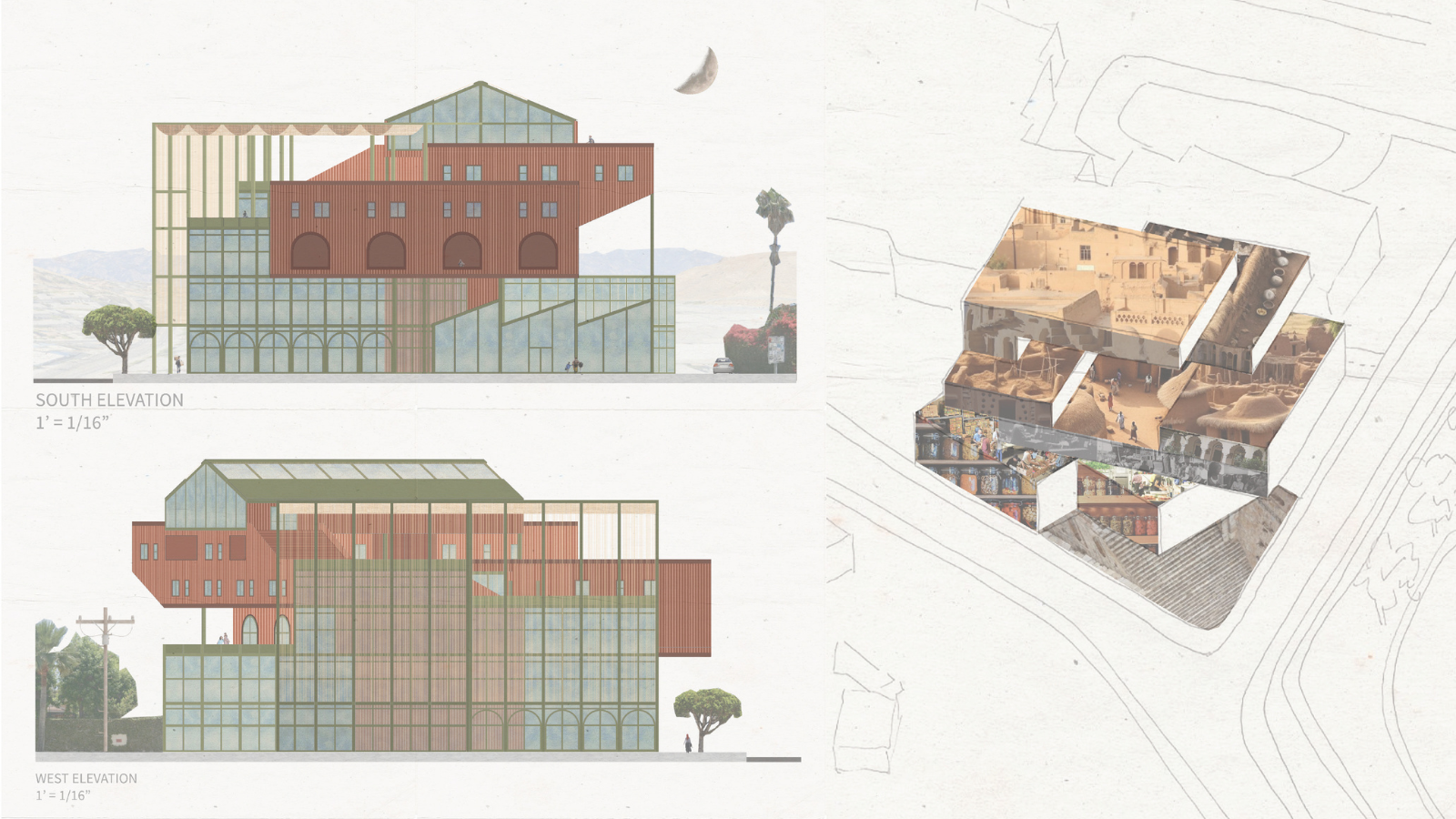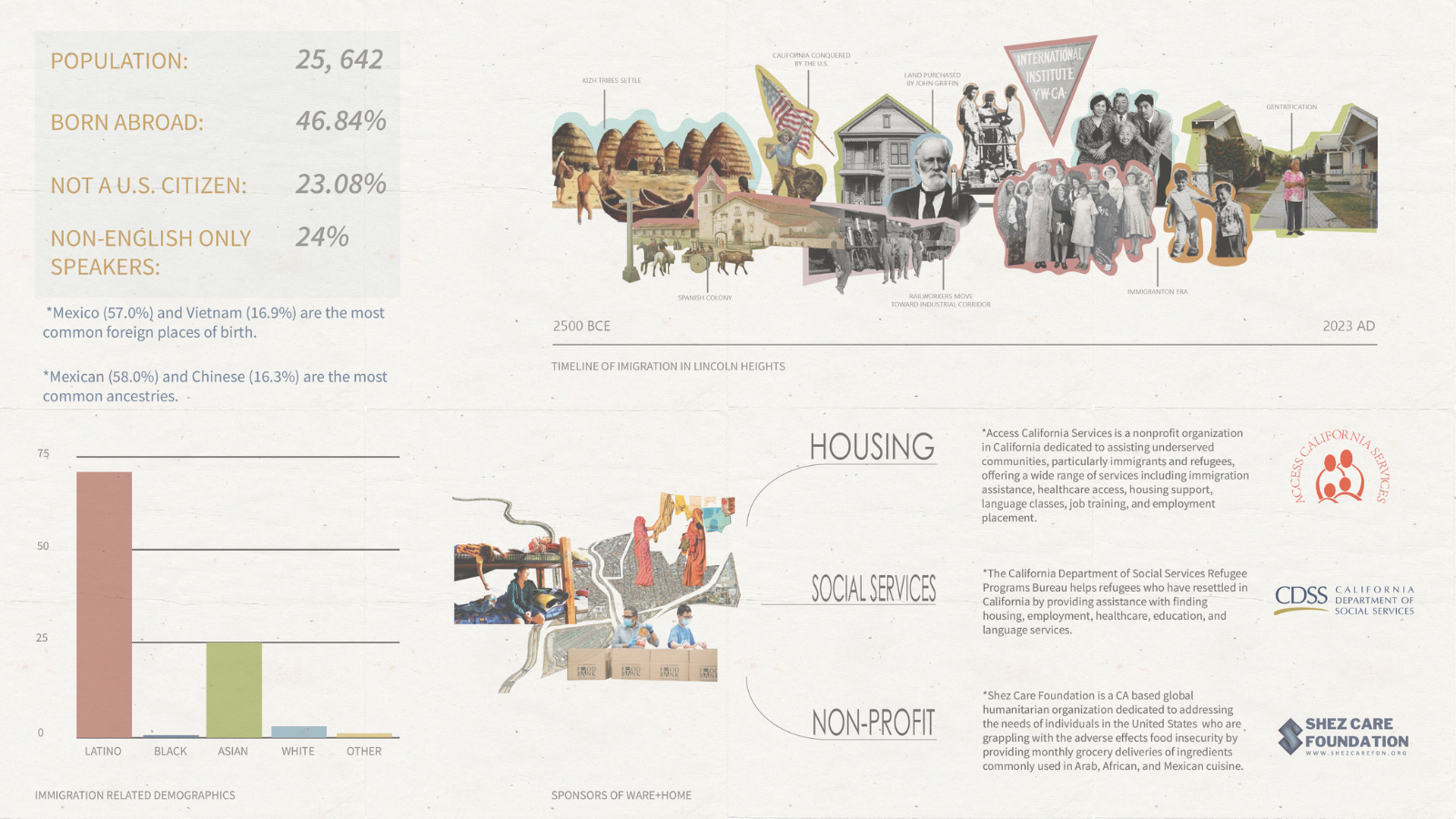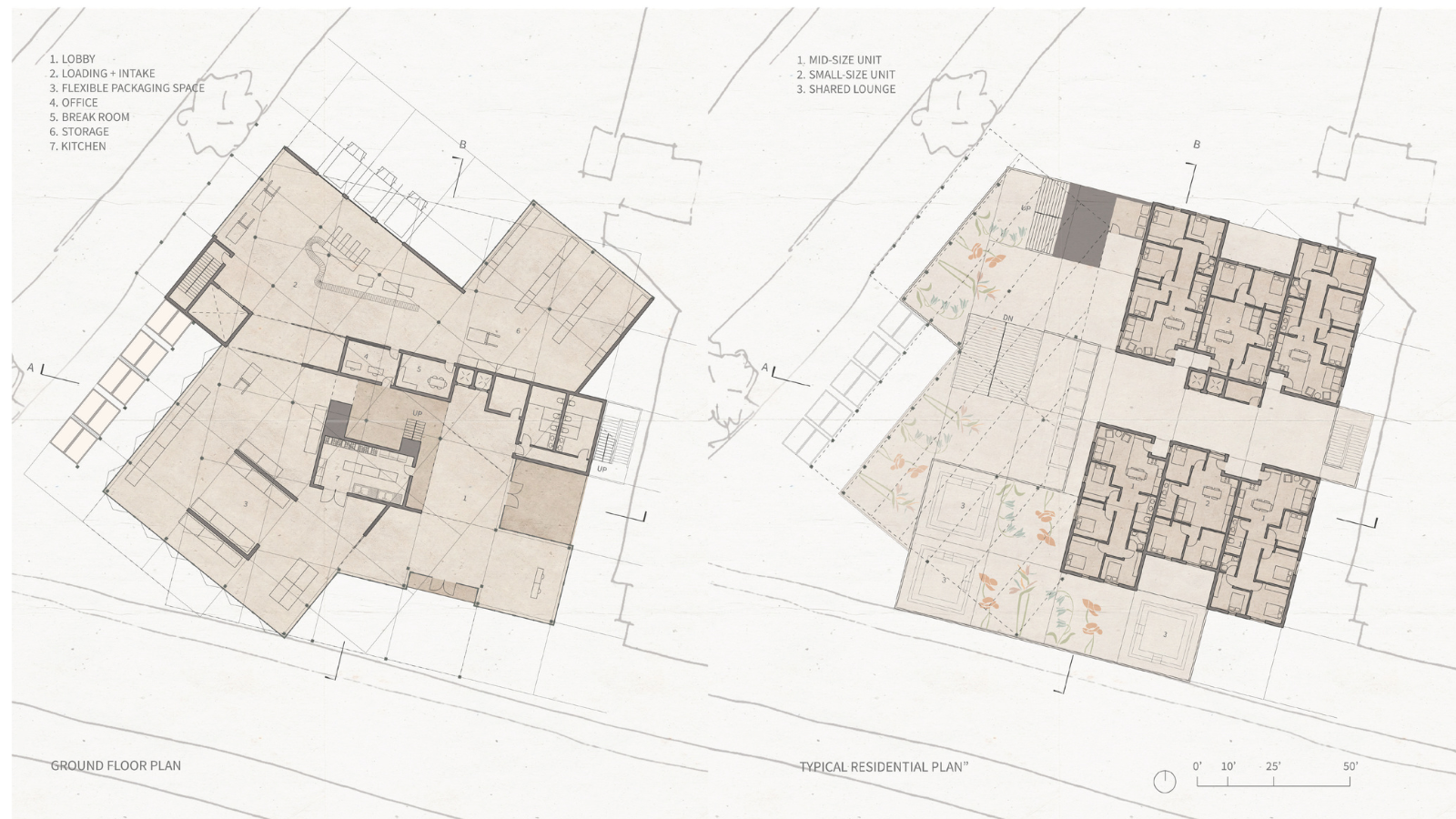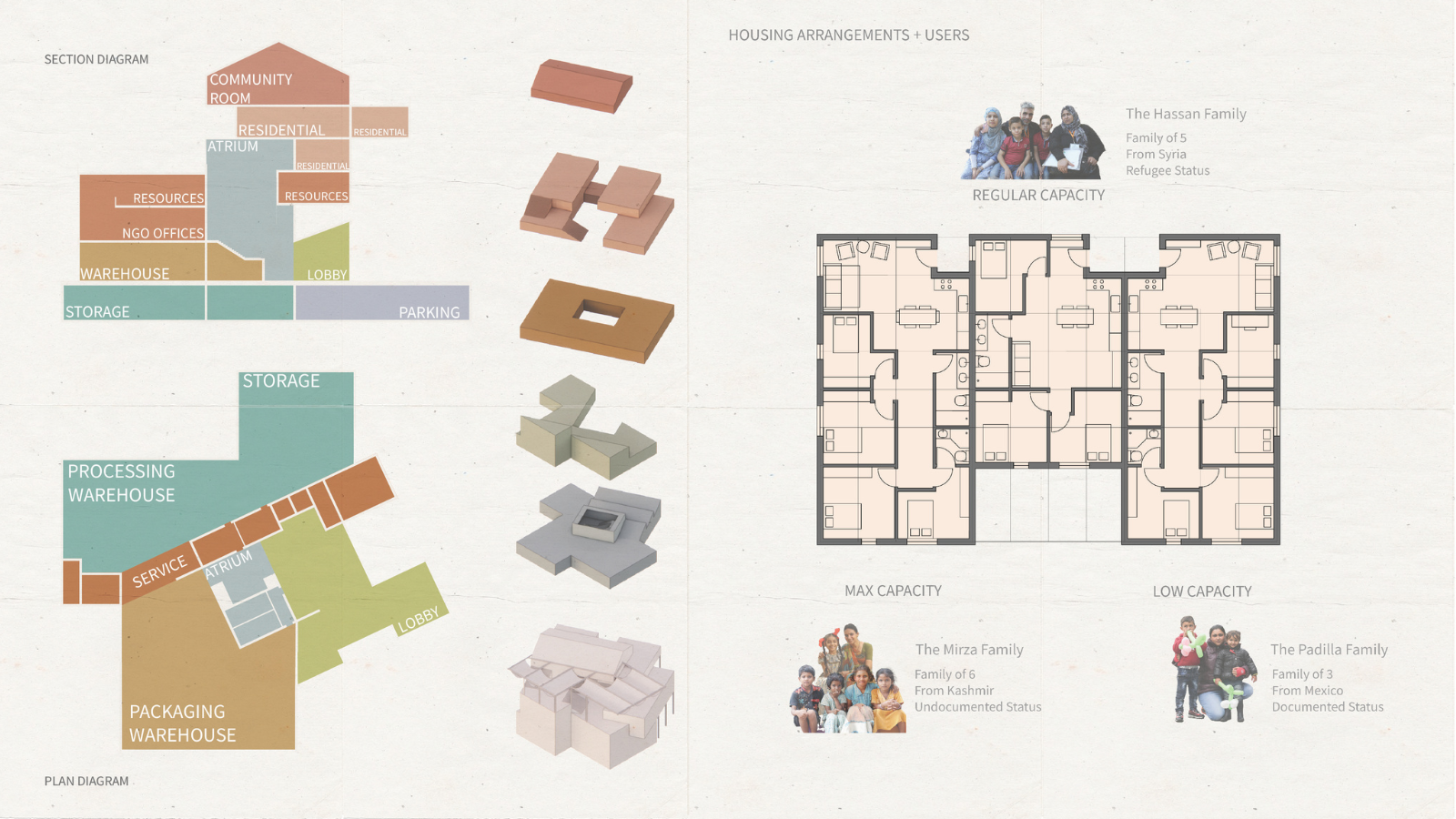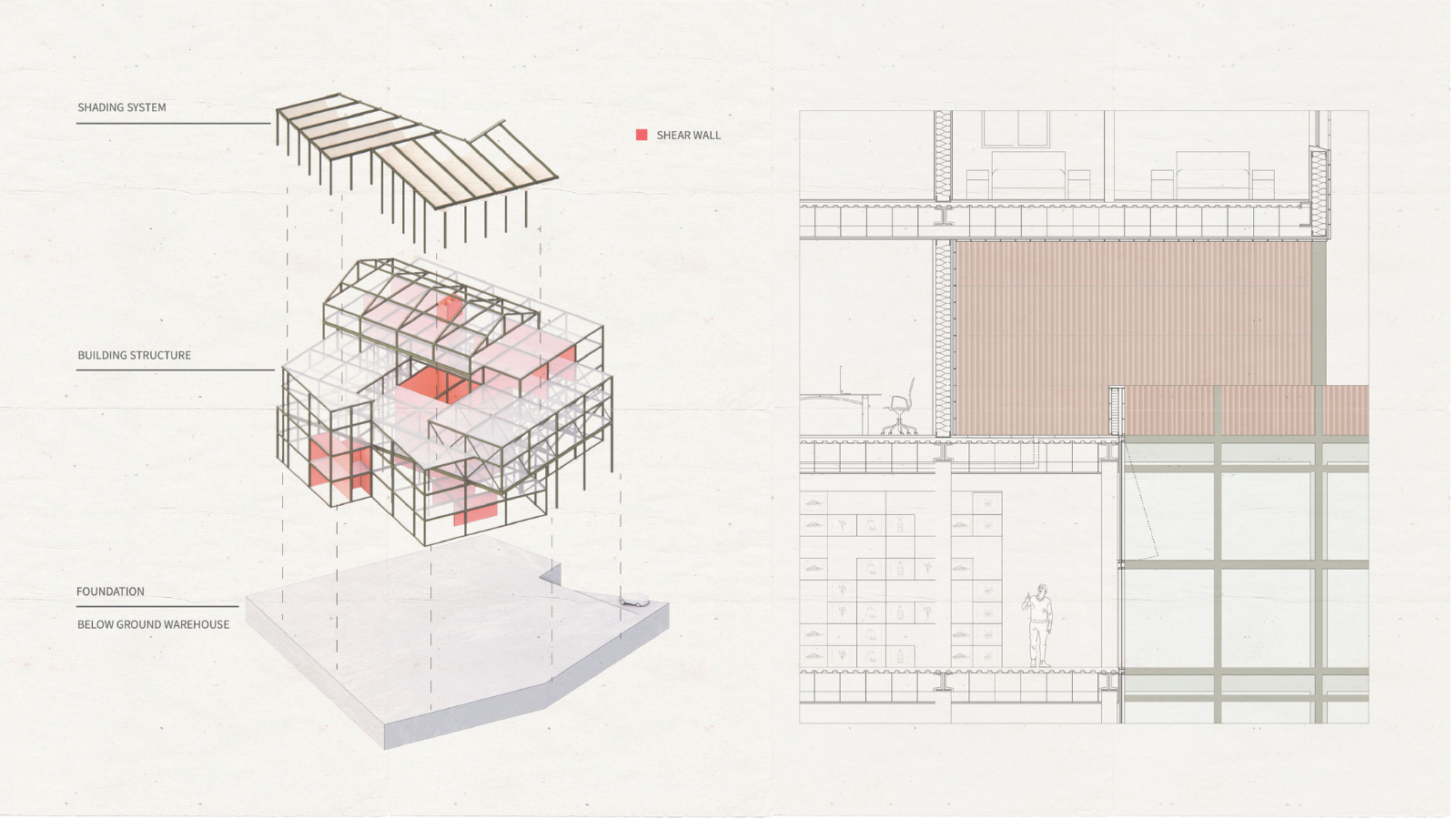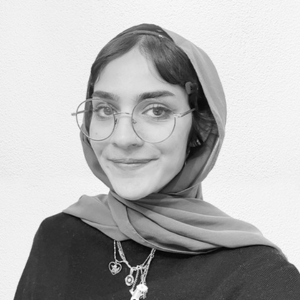
Haniya Khan
California State Polytechnic University, Pomona
Professor: Mitchell DeJarnett
WARE+home is a hybrid building in East LA that combines a food packaging and distribution warehouse with a refugee center offering resource offices and transitional housing. It aims to support the diverse immigrant and refugee communities in Lincoln Heights, where 58.8% of residents were born abroad, amidst rising cultural and religious intolerance. The warehouse is operated by Shez Care Foundation, providing groceries to refugees, while the resource offices and housing are run by Access California Services and the CDSS Refugee Programs Bureau to assist in the resettlement process. The project uses architecture as a tool of inclusion, fostering a sense of belonging for displaced individuals by integrating both SWANA design elements and historic LA motifs. WARE+home creates a centralized space for essential services, helping refugees navigate bureaucratic hurdles and access the support they need to rebuild their lives.
WARE+home
WARE+home is designed to represent and support the diverse and evolving communities of Lincoln Heights, a neighborhood in East Los Angeles that has historically been home to various immigrant groups. From the Kizh tribe of the Sonoran Desert to English, Irish, and German immigrants, Okies arriving at the end of Route 66, and a growing Mexican population after the 1920s, Los Angeles has always been in flux. Today, 58.8% of Lincoln Heights residents were born abroad, making it a place where cultural and religious diversity is integral to the fabric of the community.
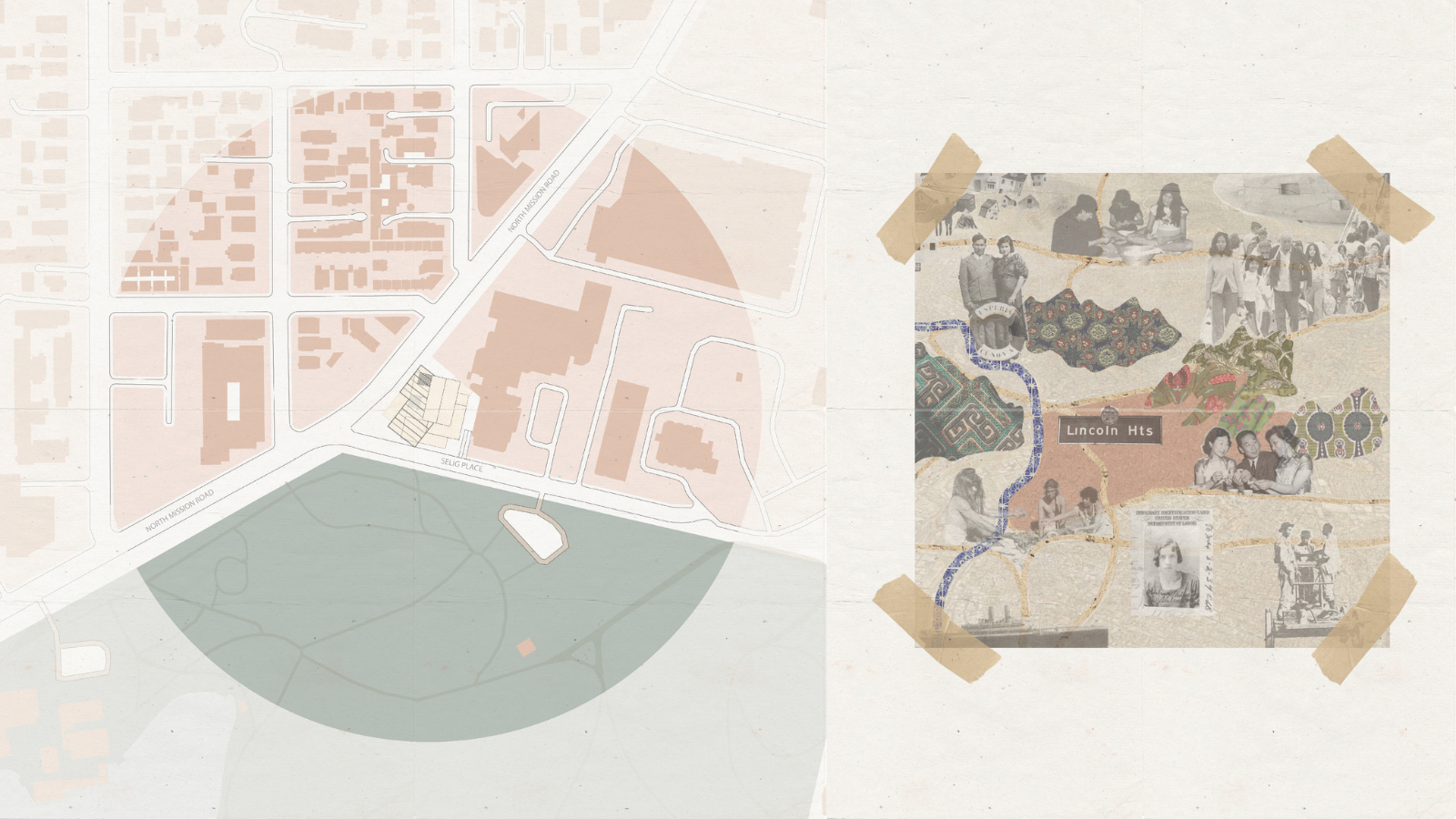
WARE+home is a hybrid building that combines a food packaging and distribution warehouse with a refugee center that includes resource offices and transitional housing. This dual-purpose structure addresses both immediate and long-term needs of new immigrants and refugees. The warehouse, operated by the Shez Care Foundation, a nonprofit delivering monthly groceries to local refugees and immigrants, provides crucial food security and employment certification opportunities. The resource offices and housing, managed by Access California Services and the California Department of Social Services (CDSS) Refugee Programs Bureau, offer aid to asylum seekers as they navigate the resettlement process. This project directly connects new arrivals with essential services, creating a centralized hub for assistance in their journey toward establishing a stable life in the United States.
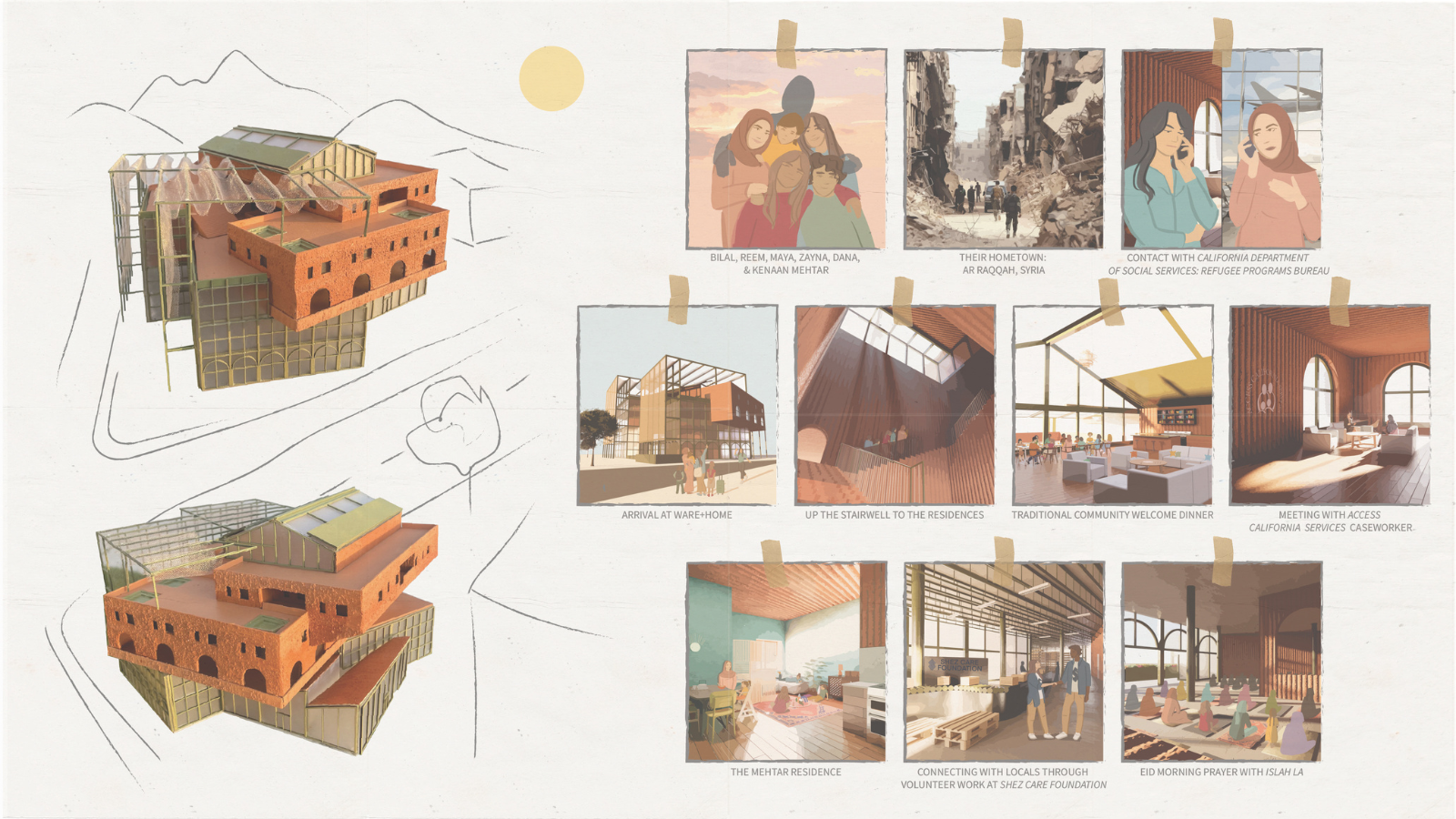
Refugees face numerous obstacles when resettling, as documented in We Thought It Would Be Heaven by Blair Sackett. The book outlines three main challenges: bureaucratic hurdles, institutional knots that delay access to services, and reverberations, where problems in one area affect others. Refugees also rely on cultural brokers, who bridge the gap between families and institutions, and institutional insiders, who guide them through complex systems. WARE+home addresses these challenges by offering a space where all the necessary resources—food, housing, and social services—are available in one location, streamlining the resettlement process and reducing the stress associated with navigating various systems.
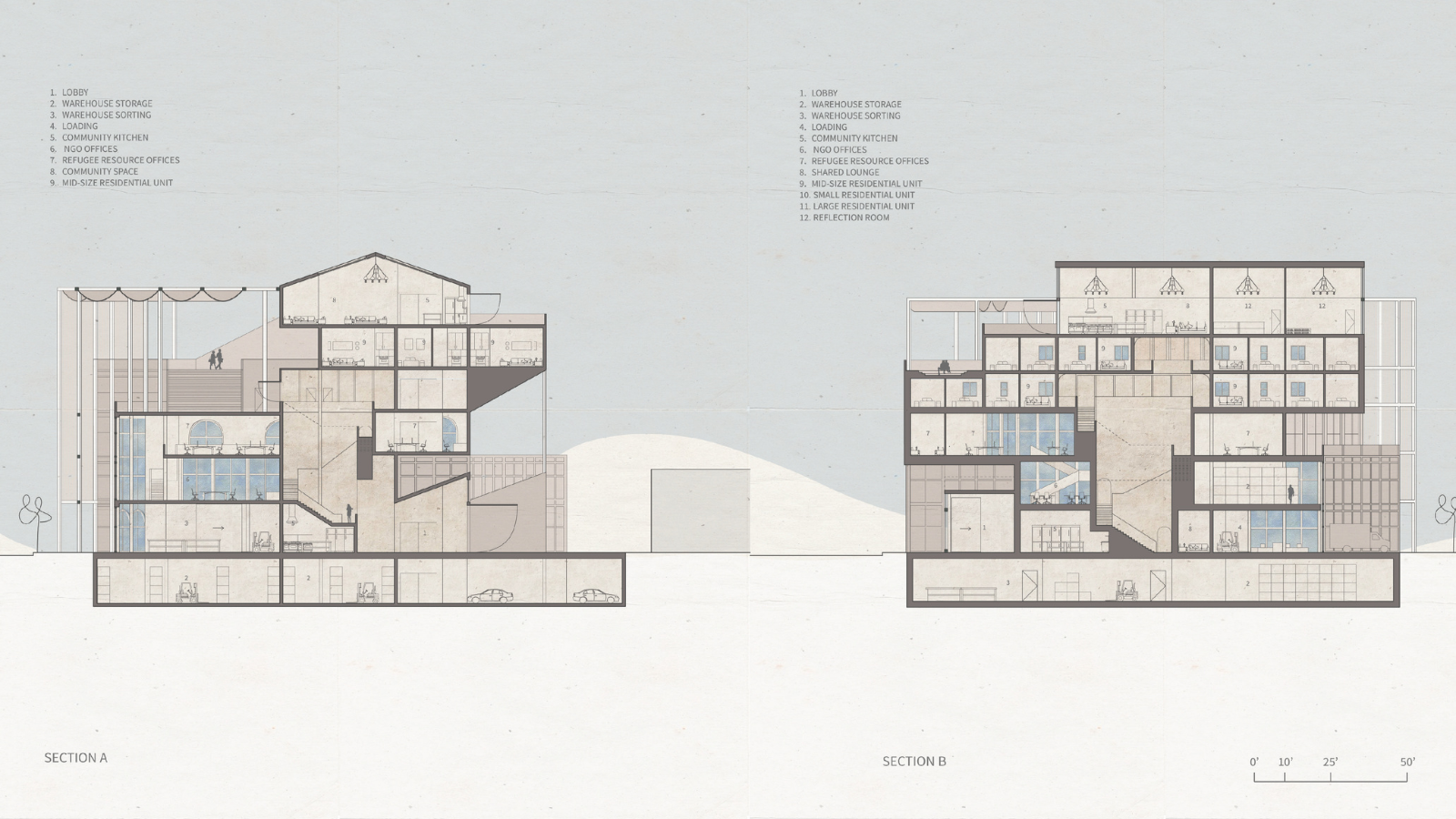
Incorporating architectural motifs familiar to the SWANA (Southwest Asia and North Africa) region, the building fosters a sense of familiarity and belonging for residents while integrating elements of Los Angeles’s historic design language. The goal with WARE+home is to create a seamless resettlement program that enriches the lives of displaced individuals and dismantles inequalities in access to essential services. This project brings together government and nonprofit organizations to provide comprehensive support, cultivating a sense of community and preserving the integrity of one’s heritage in a new environment.
